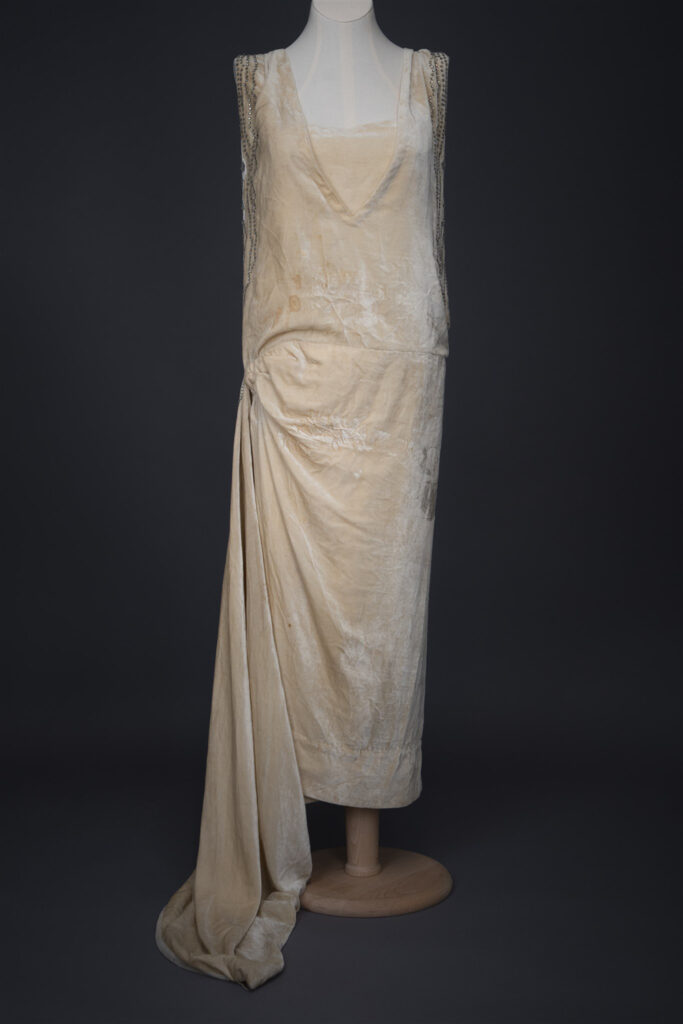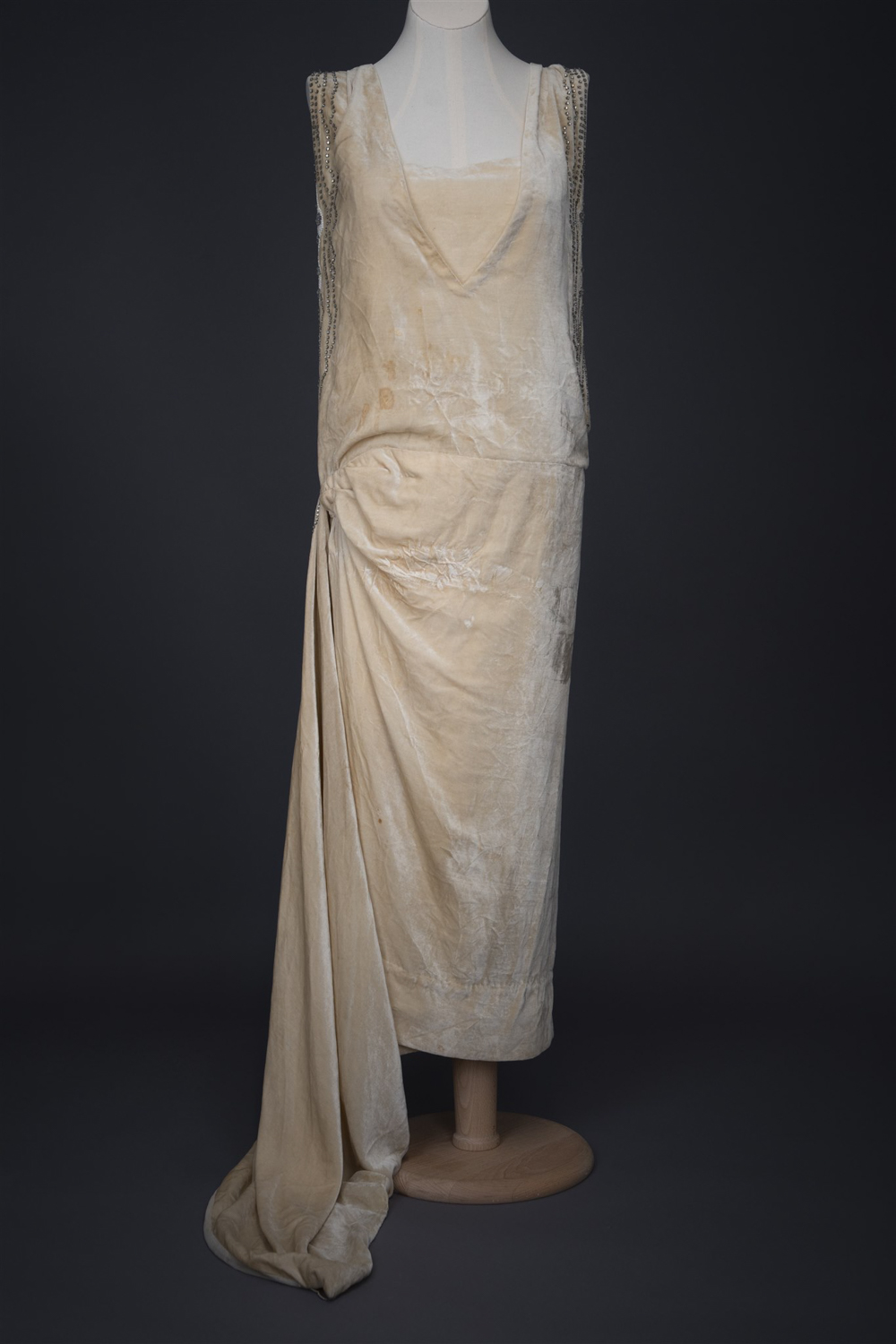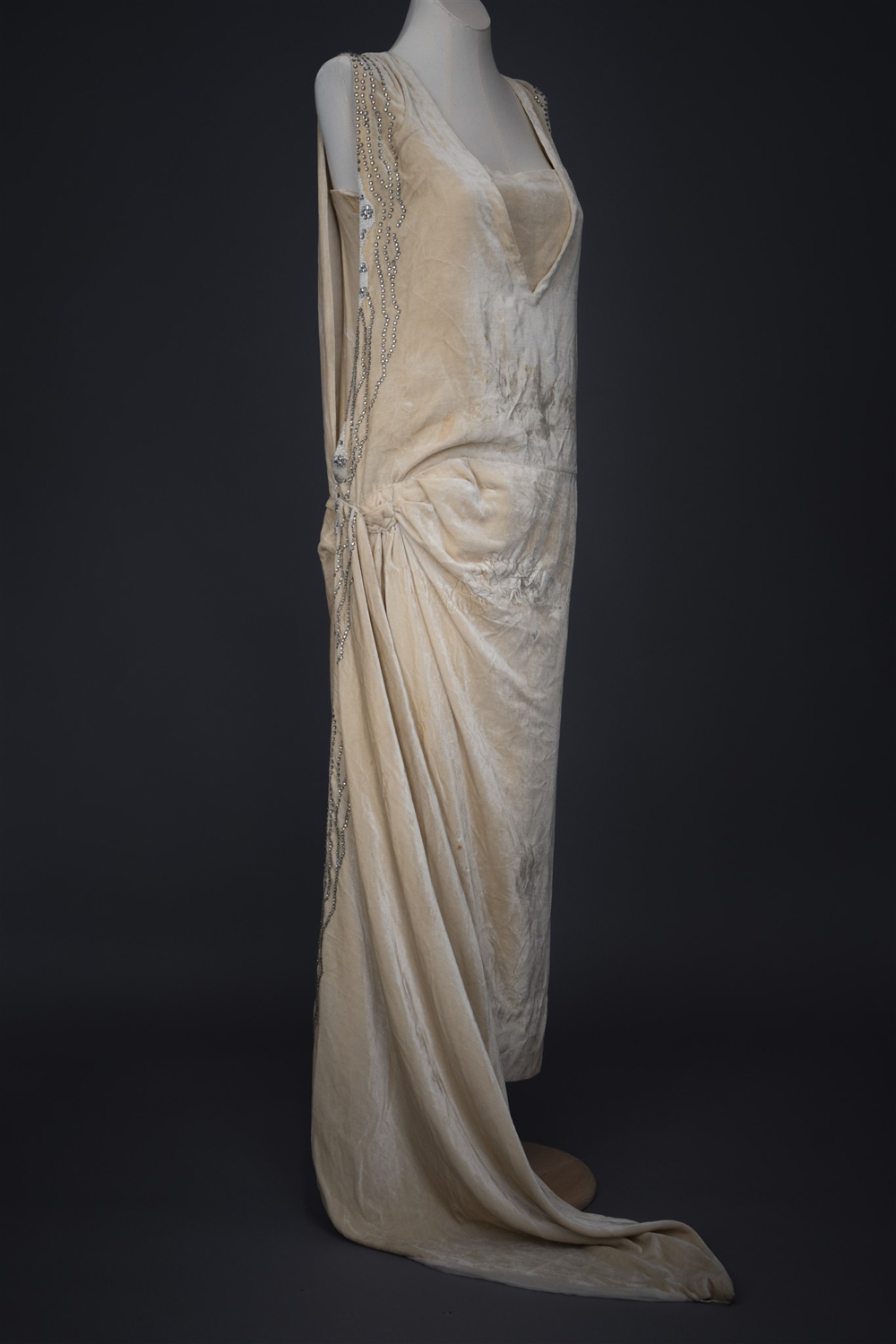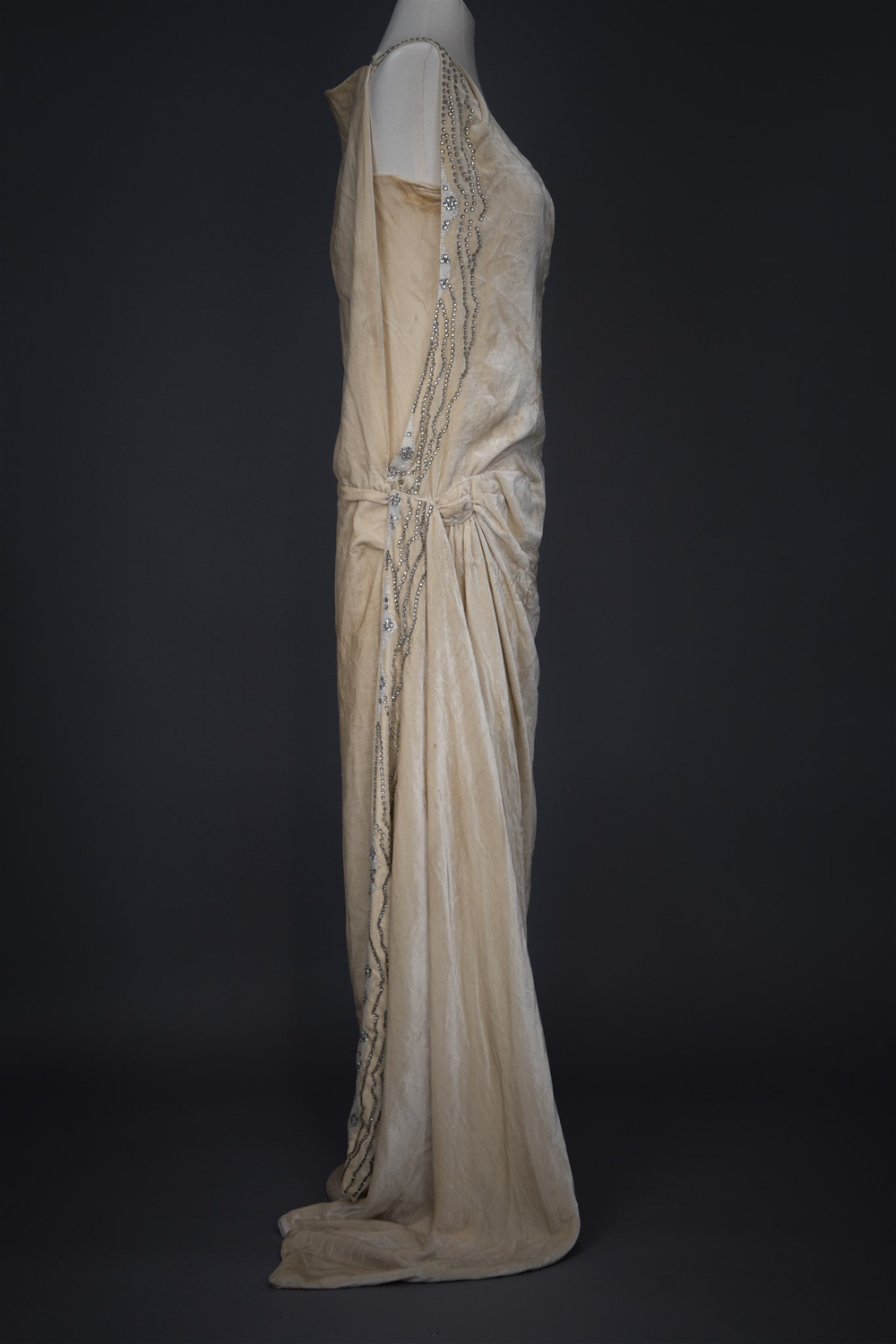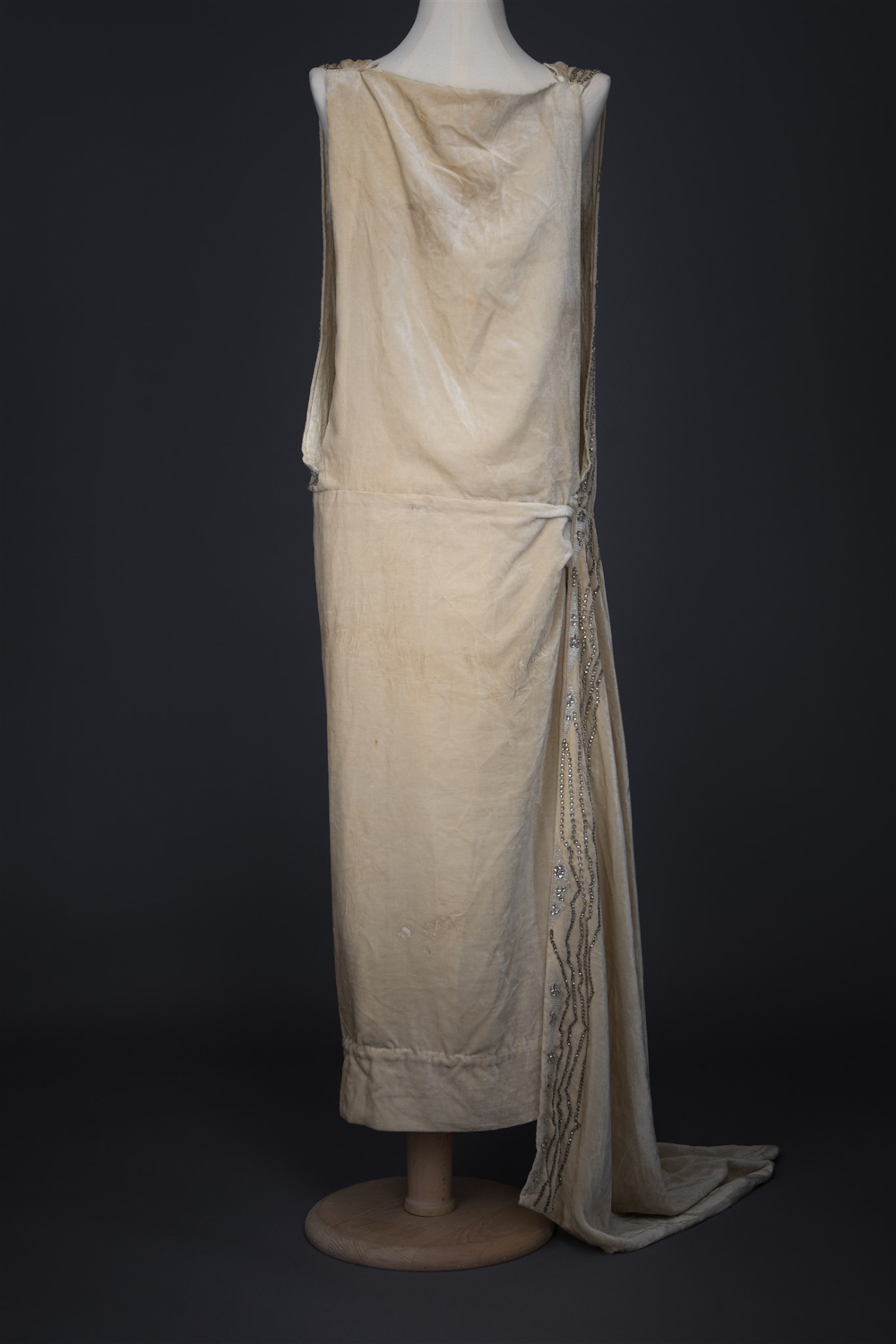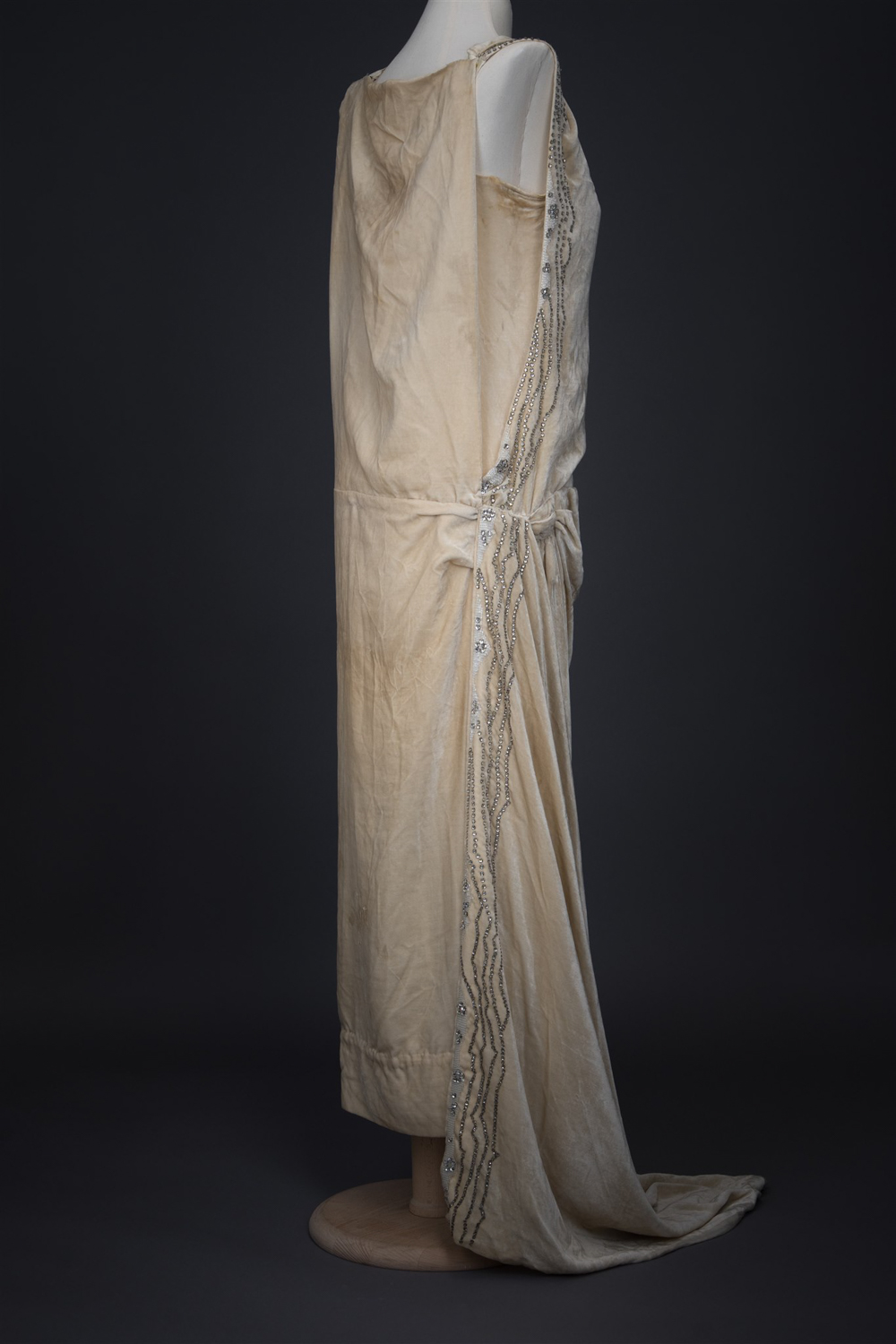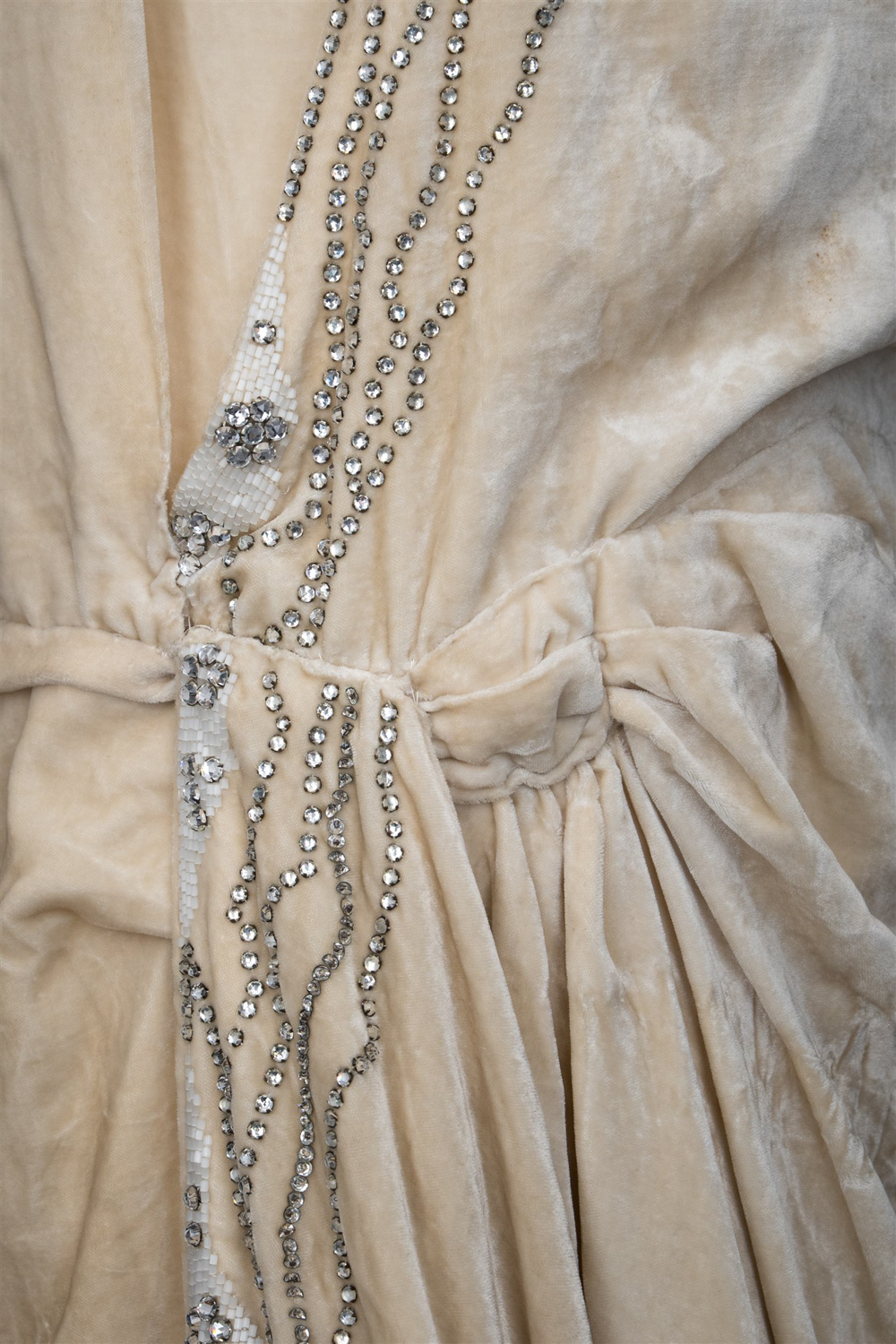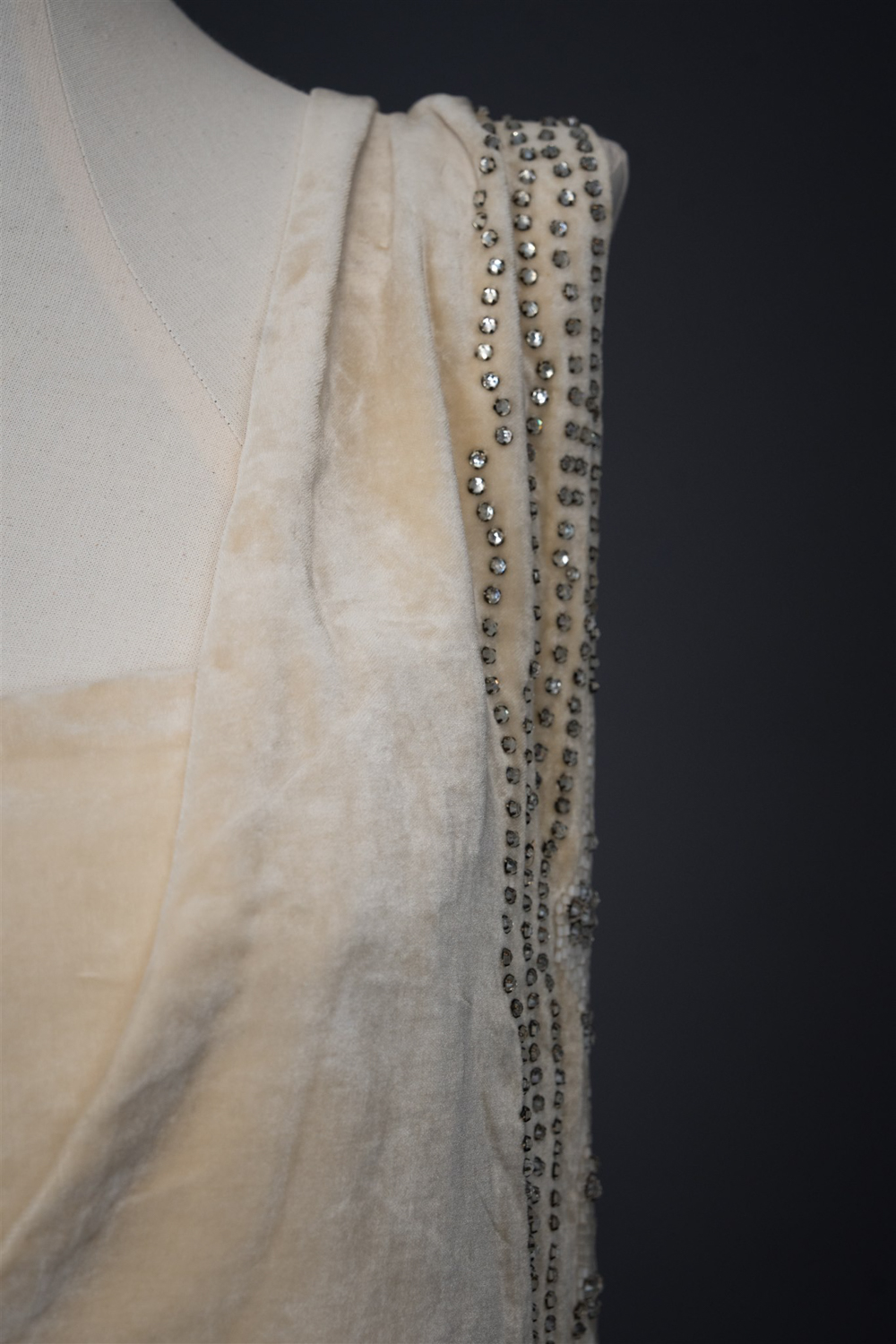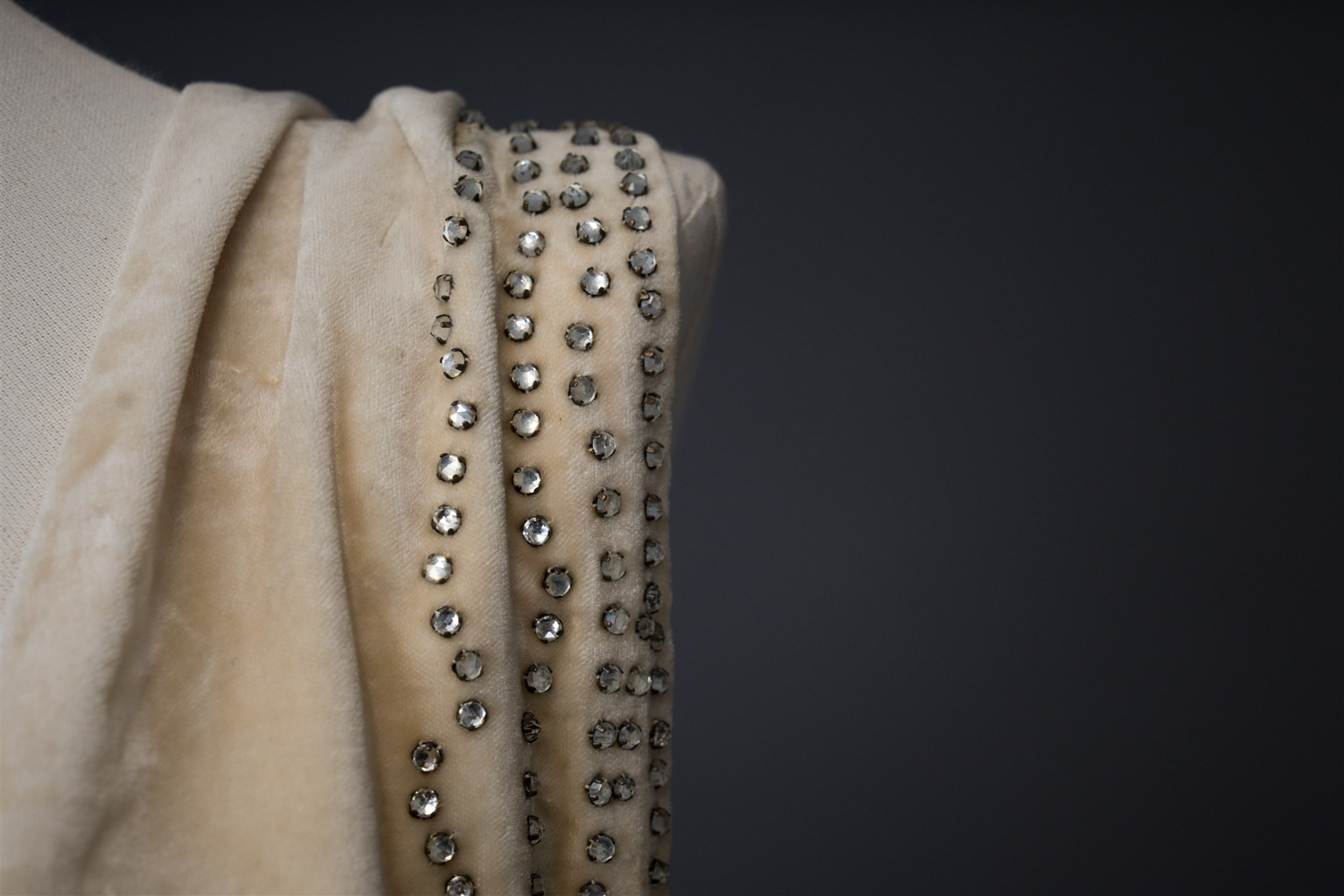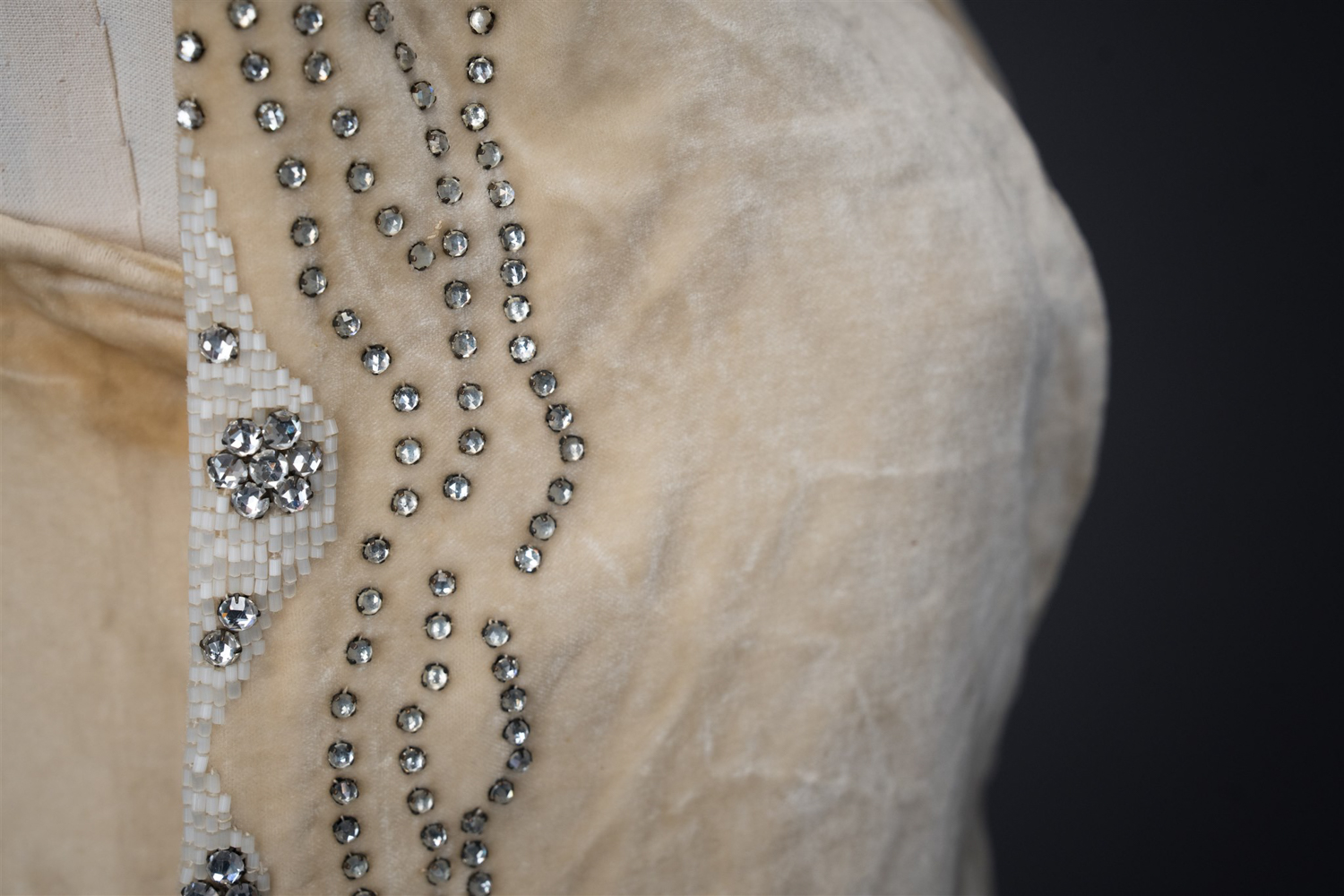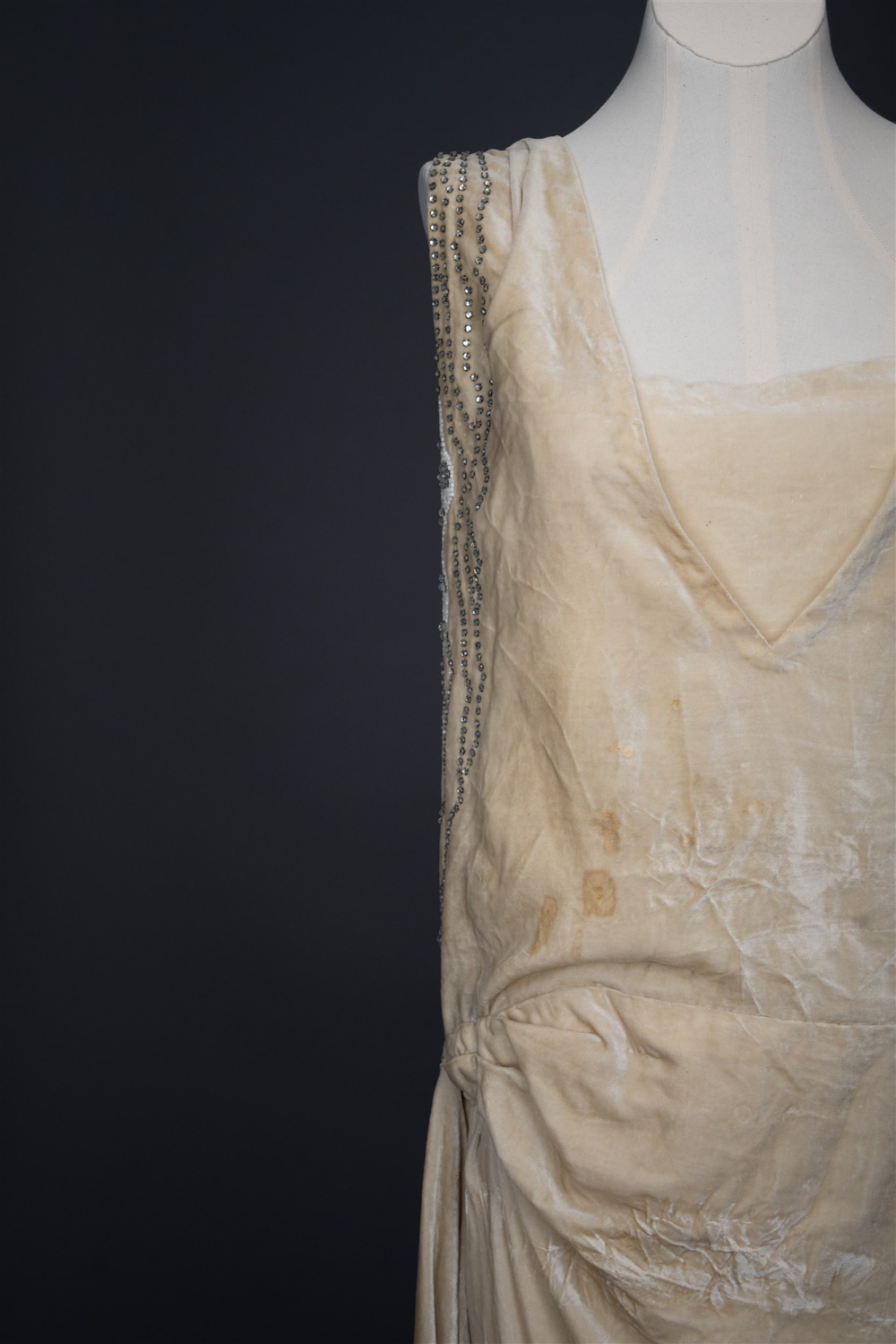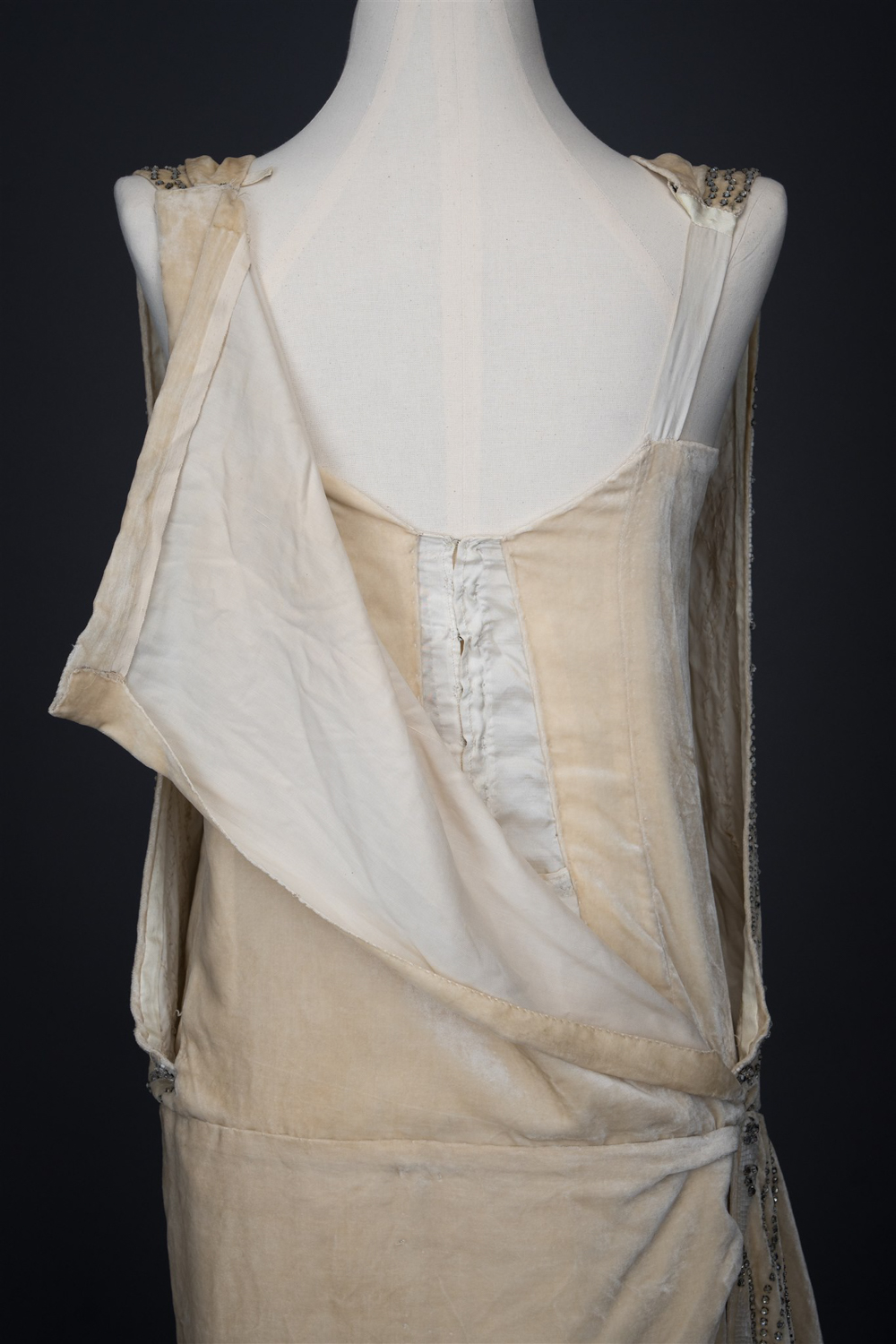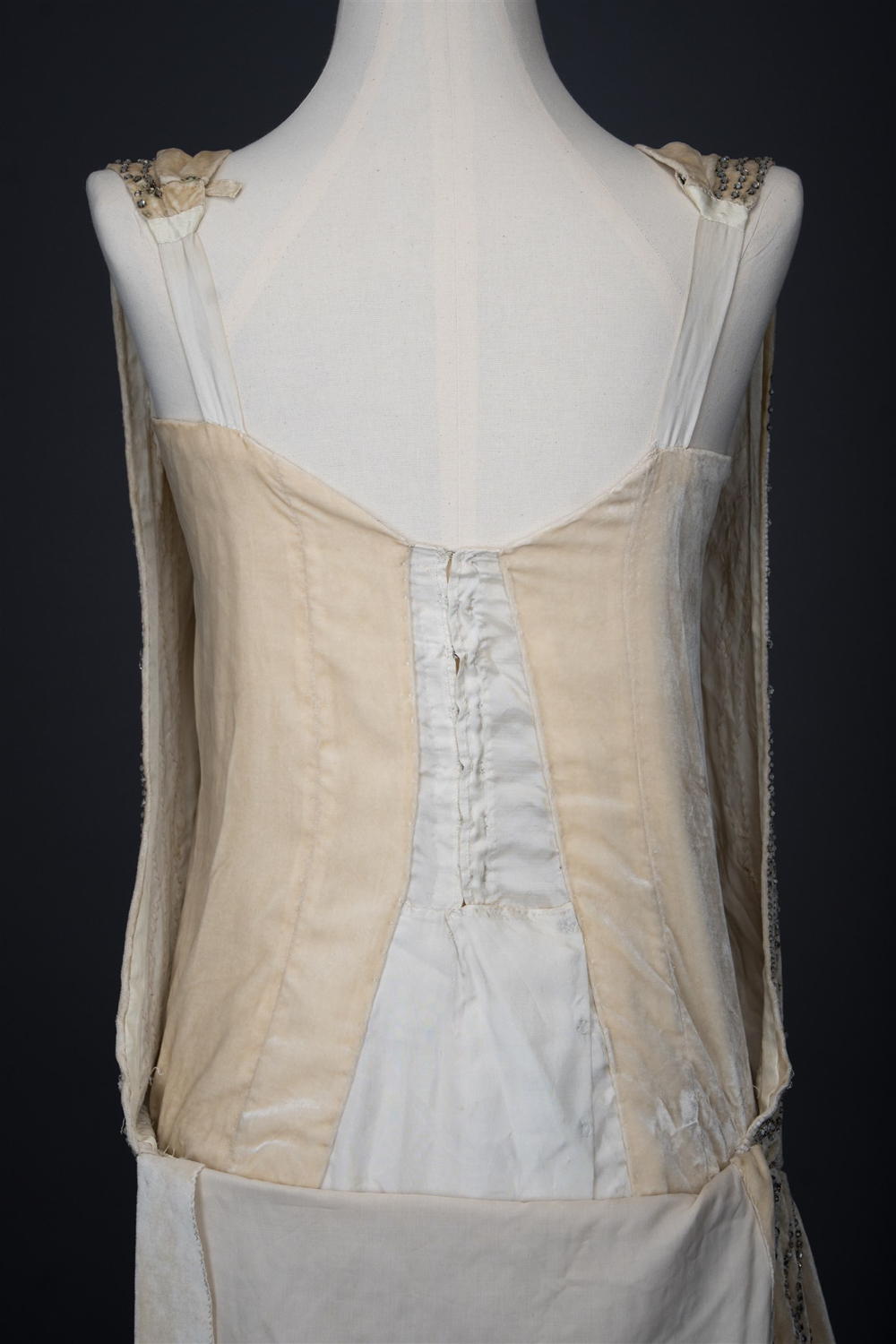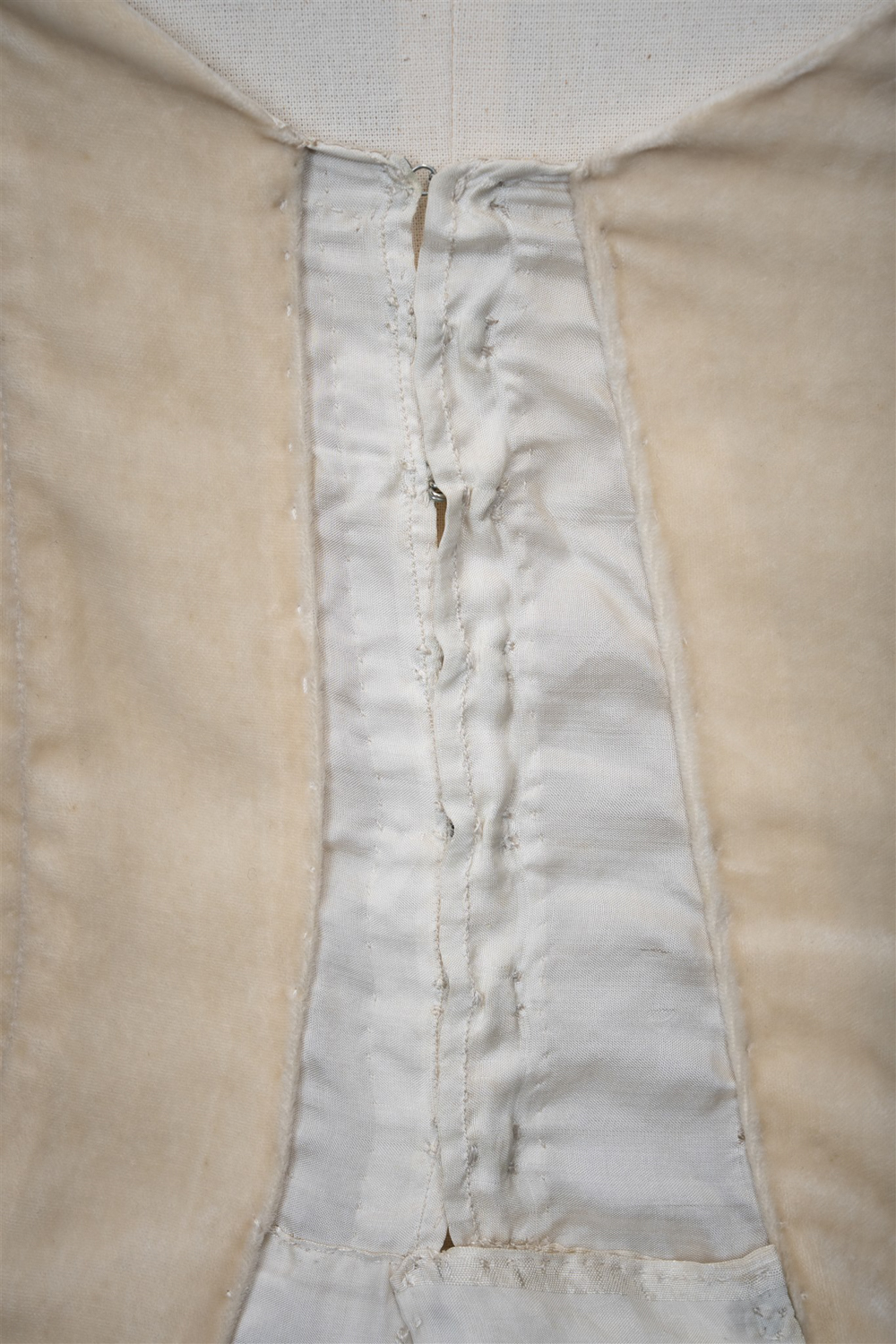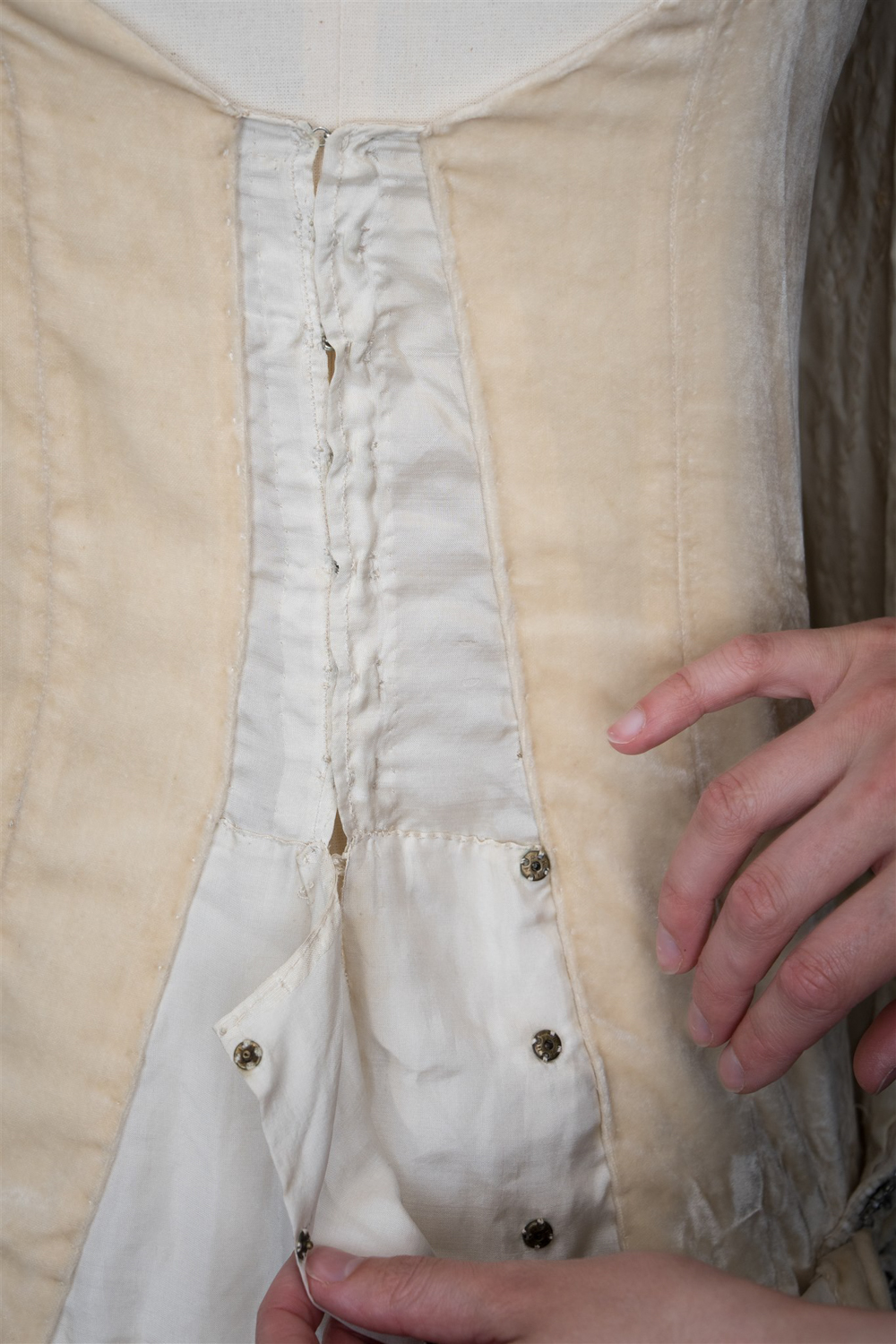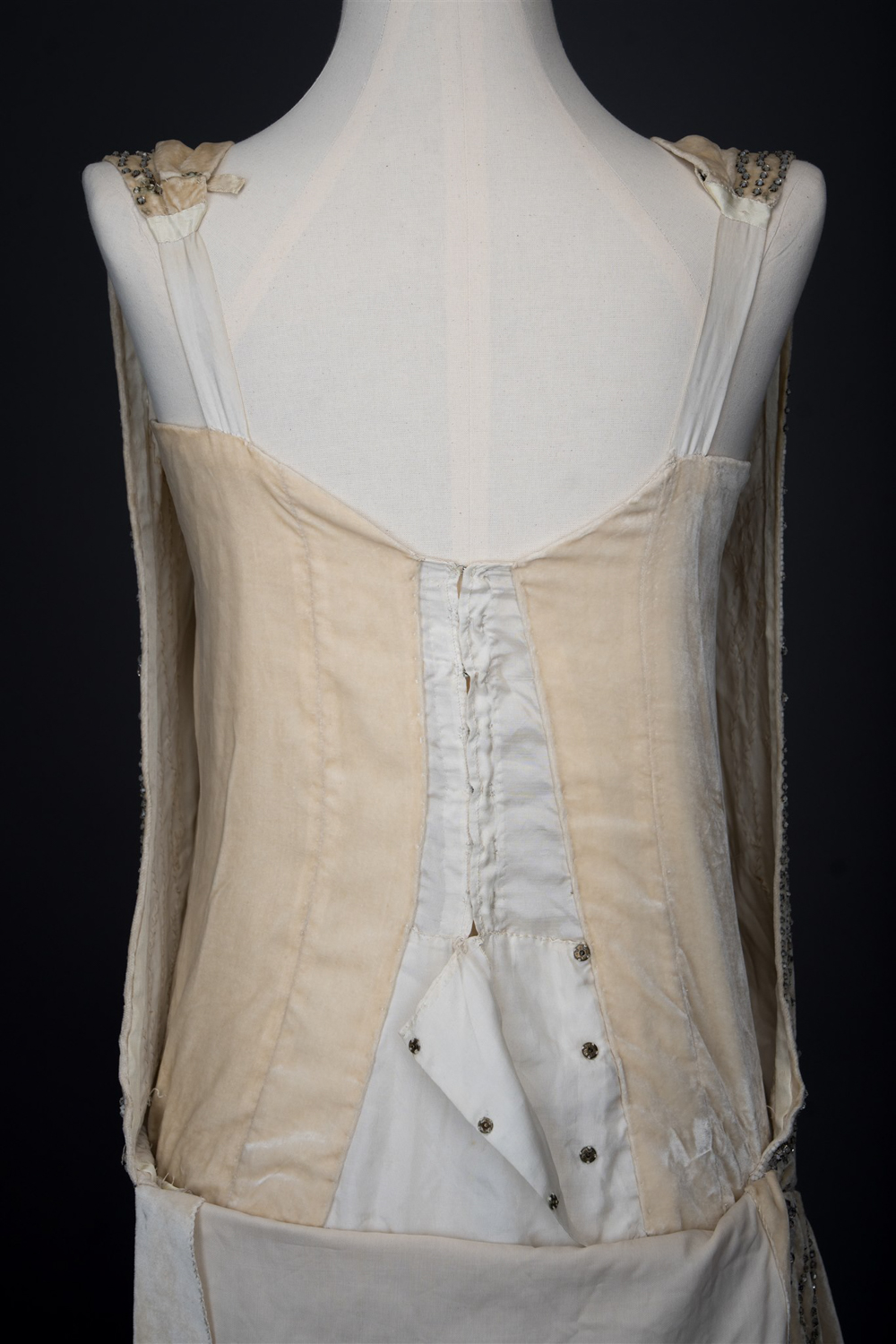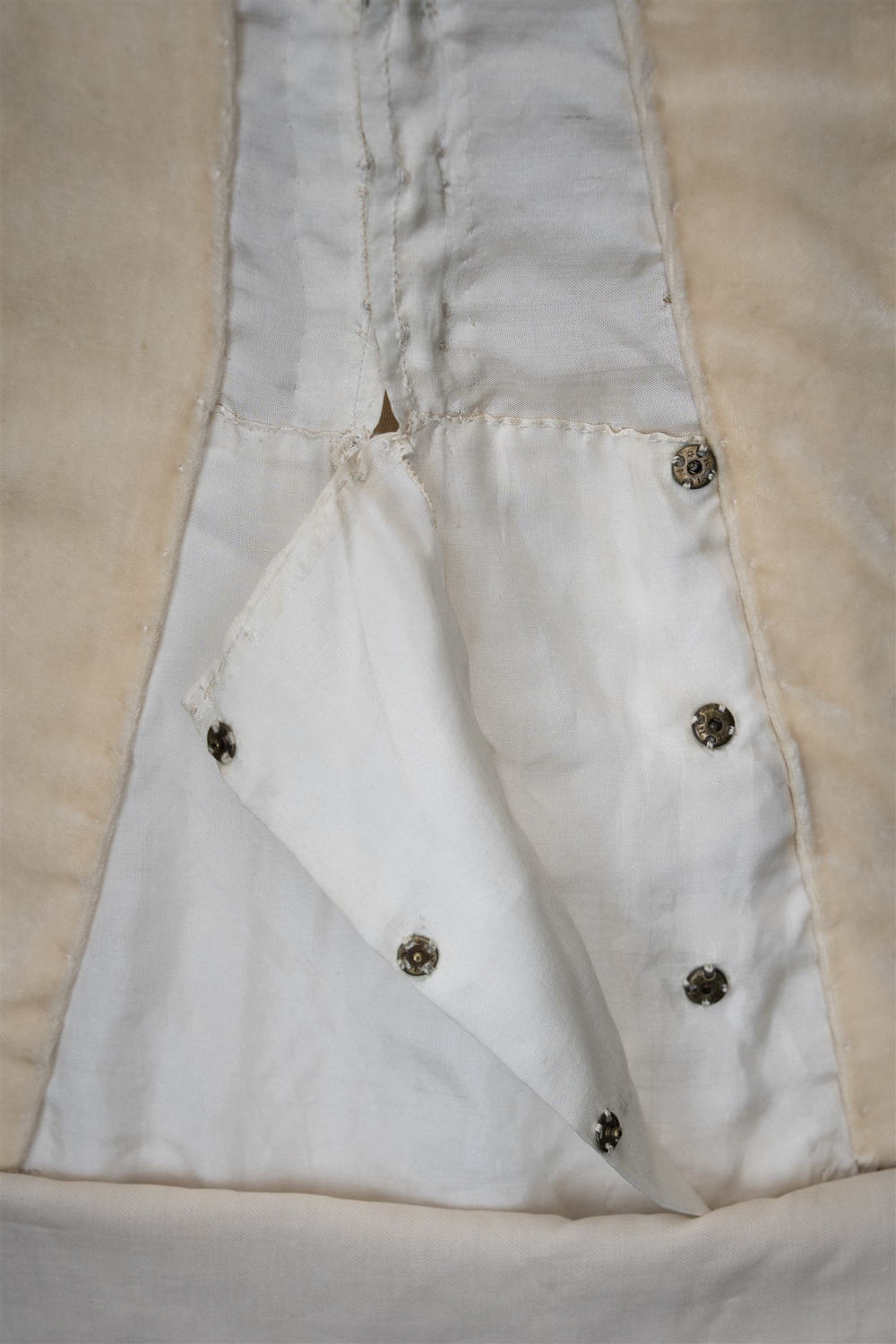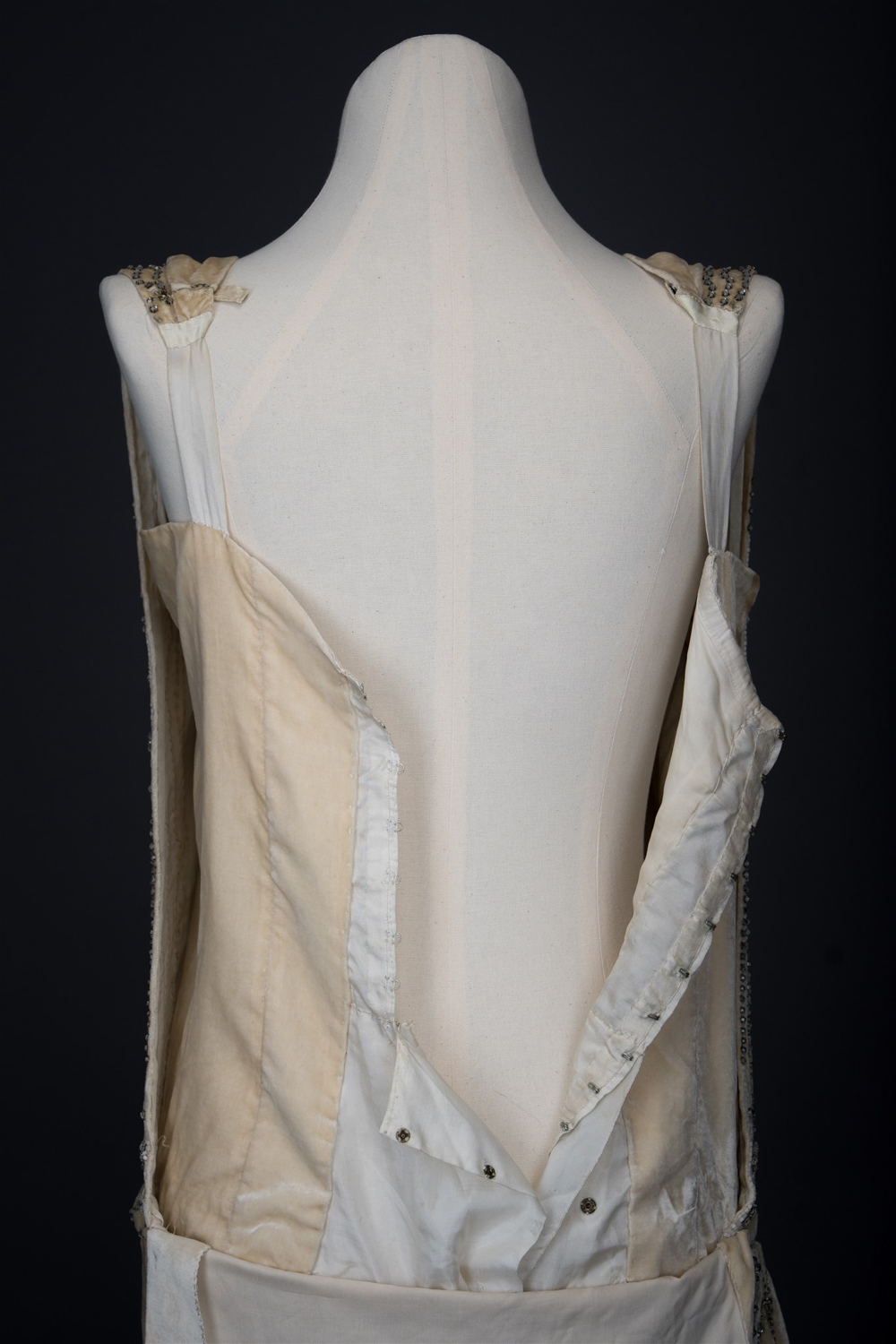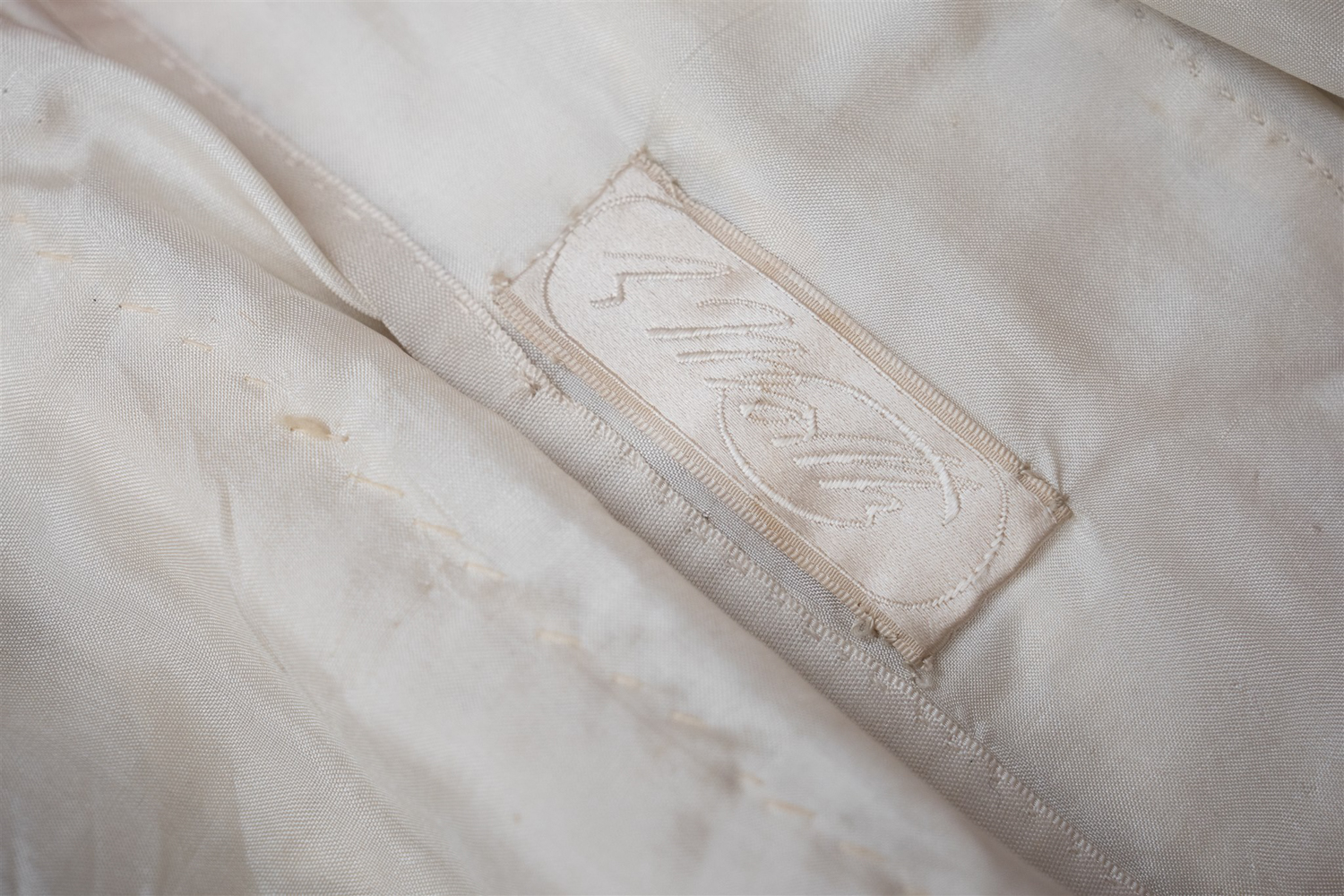Date: c. 1920
Origin: France
Fabric: Silk velvet, silk crepe, glass beads
Brand: House Of Worth
This ivory velvet House of Worth gown exemplifies the height of 1920s fashion through its modern silhouette, haute couture construction, and luxurious materials. Its undefined waist is characteristic of this decade, when foundation garments like girdles and brassieres aided women in achieving a columnar shape. Its ankle-length hemline, lack of sleeves, and trailing side train indicate its status as formal evening wear. Rhinestones and white glass beads create an intricate design along the length of the gown on either side. A fallaway panel at the back reveals how the wearer would get in and out of the gown, using snaps and hook-and-eyes.
The gown was created for Sarita Enriqueta (née Ward) (1891-1985), Lady Vansittart (1891-1985), the former wife of Sir Colville Barclay, and later wife of 1st Baron Vansittart. She was the daughter of British sculptor Herbert Ward and Sarita Sanford. At the time this garment was made, Ward would have been in her thirties and married to British diplomat Sir Colville Adrien De Rune Barclay (1869-1929).
The House of Worth was established in Paris in 1858 by English-born Charles Frederick Worth, who is regarded as the first-ever couturier. From royalty to socialites, Worth’s cult following amongst wealthy international clientele also gained him the reputation of being the first celebrity fashion designer. As the nineteenth century progressed, the House of Worth largely continued its supremacy relatively unchallenged until the 1890s, when newer couture houses began competing for its clients.
After Charles Frederick Worth died in 1895, the business was continued by his sons Gaston-Lucien and Jean-Philippe. Under their tenure, the house continued its success into the 1920s. According to Vogue, in 1920, the house still maintained its “reputation for evening gowns of unsurpassed distinction and beauty.” Illustrations from throughout the decade, designed by Jean-Philippe, show evening gowns with similar necklines and side trains, including one from late 1923 titled “Solange,” and another from early 1926, titled “Minuit.” The House of Worth officially closed in 1952 when Charles Frederick Worth’s great-grandson, Jean-Charles, retired from the family business.
From the collection of Karolina Laskowska
